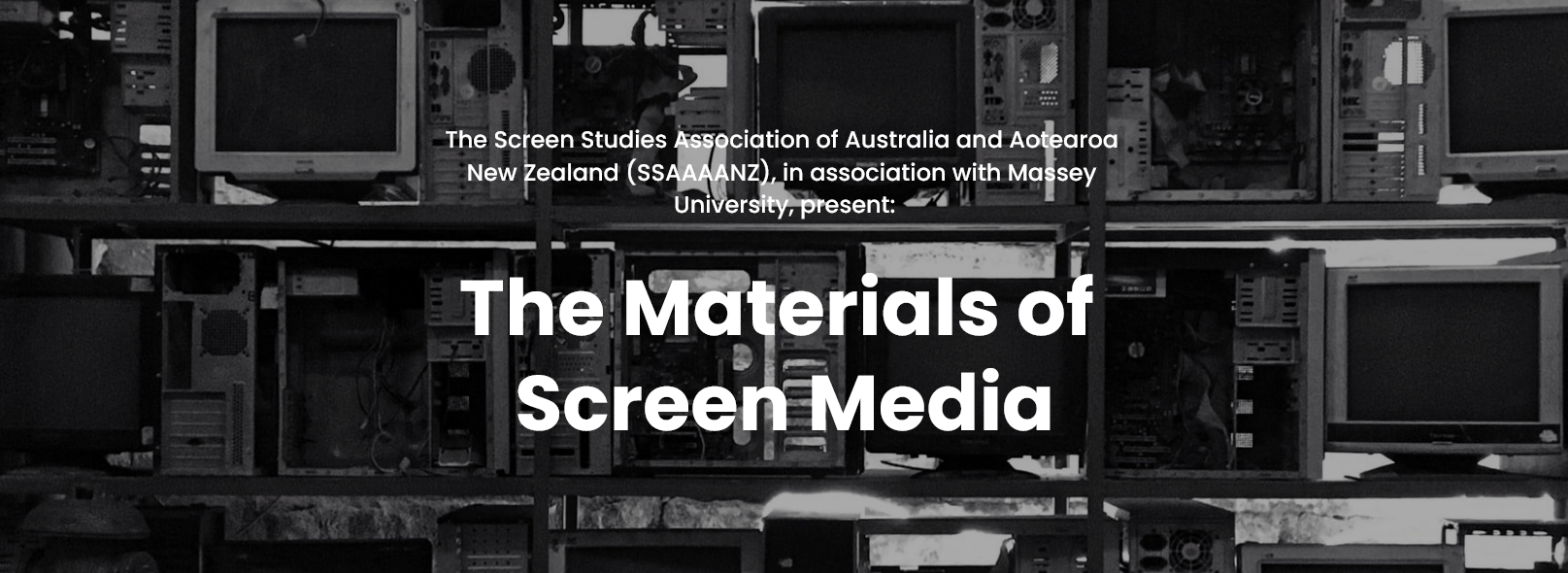“Materialism,” “materials,” “materiality,” “matter”: for scholars in screen and media studies, is there anything these terms can’t do? They shape our common critical vernacular, from references to “source material” to discussion of “subject matter.” They also sustain a range of approaches to screen media—from cultural materialist frameworks (Garnham; Williams) to theories of the cinematic apparatus (Baudry; Hanich; Pedulla; Straw; Elsaesser), and from film and TV exhibition histories (Friedberg; Griffiths; Schwarz; Spigel; Szczepaniak-Gillece) to indigenous approaches to media materiality (Hokowhitu; Larkin; Miner; Smith) and contemporary studies of screen production and distribution (Holt and Perrin; Mayer, Banks and Caldwell; Cunningham and Silver; Lobato). In fact, across the past two decades, screen and media studies has undergone what a number of critics have identified as a full-scale “material turn” (Herzogenrath; Mitchell). Among scholars associated with this turn, the “material” betokens, variously, the infrastructural underpinnings of screen media (Starosielski; Parks and Starosielski), the raw geo- and biophysical resources that feed screen media (Bozak; Cubitt; Maxwell and Miller; Parikka), the audiovisual technologies of screen media (Dourish; Gittelman; Kittler), the material cultures of screen media (Benson-Allot), the affective flows of the technologically mediated bodies that experience screen media (Kavka; Marks; Sobchack), and screen media’s unique ontology (Arsenjuk).
The SSAAANZ 2022 conference, hosted online by Massey University from the 30th of November to the 2nd of December 2022 (with a prefix day for postgrads and ECRs on 29th November), will both take stock of existing uses of terms like “materialism,” “materials,” “materiality,” and “matter” in screen studies, and open up these terms to new applications. We invite contributions that push the rubric of “materiality” in novel critical directions, as well as those working within existing “materialist” traditions, from media industry studies, to affect theory, to infrastructure studies. We especially encourage reflexive thinking across these traditions. Why have we returned so frequently to a metaphorics of “materialism” and “materiality” in our efforts to understand how screen media work, what screen media are and why screen media matter to us? What is the relationship between Williams’s “cultural materialism” and Latour’s “matter,” or between Caldwell’s “material practices” and Sobchack’s material body? And how might the rise of digital and algorithmic media transform our understanding of the screen media’s “material” base?
Keynote speakers:
- Caetlin Benson-Allott (Georgetown University)
- Olivia Khoo (Monash University)
- Alice Lovejoy (University of Minnesota)
Guest filmmakers:
- Sari Braithwaite, director of [CENSORED] (2018)
- CIRCUIT artists and curator Mark Williams
- Heperi Mita, director of Merata: How Mum Decolonised the Screen (2018)
- Tiriki Onus and Alec Morgan, co-directors of Ablaze (2020)
Papers may address, but are by no means limited to, the following themes:
- Materials on screen/the matter of images
- Screen media agencies, industries and institutions
- Production studies and media industry studies in Australia, New Zealand and beyond
- The crafts of film and TV production: production design, costume design, set and props construction.
- Film and TV preservation and archiving
- The material cultures of screen media consumption
- Screens and the built environment
- Sizes, shapes, textures of screens
- Media and/as the natural environment: cloud media, rain media, stone media
- Indigenous approaches to and perspectives on media and materiality
- Film stock: histories, politics, aesthetics
- Practices and networks of media distribution
- “Old” materialisms: Marx, Adorno, Williams
- Class and stuff/the stuff of class
- The “stuff of bits”: spreadsheets, databases, networks
- The political ecology of media
- The production and post-production workflow: shooting, editing, animation, effects
- Film and television affect
- Resource media: carbon, sunlight, plastic
- Materialisms “old” and “new” in critical conversation
- Dead media, media waste
- Film and media infrastructures: server farms to undersea networks
- Thing theory, both above and below the line
- “German” media theory in Australasia
- New materialism and Media: speculative media, object-oriented media
Proposals for presentations at the conference must be submitted by 30 May 2022.
This conference will take place online to ensure accessibility and provide certainty in the current climate.
We are accepting proposals for sessions of four kinds:
Individual presentations
We ask that presenters pre-record presentations of 7-15 minutes long so that they can be made available online ahead of the live online panels, which will be dedicated to discussion and Q&A.
Roundtables
Discussions on a scholarly topic led by a chair and 3-5 speakers. This format involves each speaker presenting for up to 5 minutes on the topic in order to kick off a roundtable conversation on the theme, and then engaging in further discussion with the audience.
Pre-constituted panels
These proposals should include an overarching rationale as well as proposals for 3-4 individual presentations (of 7-15 minutes long). We ask that presenters pre-record these presentations.
Seminars
Participatory sessions led by 1-2 seminar leaders with up to 8 participants and an audience of auditors. Seminar leaders will invite participants to undertake preparatory tasks that will be shared prior to the conference.
Panels and Roundtables will run for up to 55 minutes, Seminars will run for 90 minutes.
More information on the conference website: https://ssaaanz2022.com/






